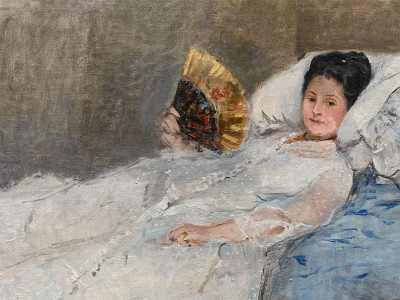Start here: Impressionists on Paper
Start here: Impressionists on Paper
Published 6 October 2023
Find out more about the ways Impressionist and Post-Impressionist artists worked on paper ahead of our latest exhibition.
-
-

In 19th-century France, working on paper was mainly seen as a means to an end – a tool used to prepare for finished paintings.
The Impressionists changed that. They created works on paper – using pencil, pastels, watercolours and more – which were independent works of art in their own right, and they displayed these works in their exhibitions.
This exhibition brings together a wide range of those works on paper to show how Impressionist and Post-Impressionist drawings became as significant as their paintings.
-
-
-

The Impressionists
Sunsets in Normandy, Parisian street scenes, or waterlilies in Giverny – the works of the Impressionists’ are instantly recognisable. They often worked outdoors en plein air, in the city or in the countryside. They sketched, drew and painted scenes from everyday life with a quick, loose touch, vivid colour, daring viewpoints and a deliberate lack of finish.
-
-
Find out more about some of the artists featured in the exhibition:

Edgar Degas, Dancer Yawning (Dancer Stretching), 1873.

Berthe Morisot, Portrait of Isabelle Lambert, 1885.

Vincent van Gogh, The Fortifications of Paris with Houses, 1887.

Henri de Toulouse-Lautrec, Two Friends, 1895.
-
-

Working on paper
By working on paper, the Impressionists and Post-Impressionists made work that wouldn’t have been possible using oil on canvas.
They captured a fleeting moment with a few pencil strokes, combined watercolour paints with charcoal sketches to create new effects and worked in pastels to render the effects of light on Normandy cliffs.
-
-
-

New developments, new techniques
The 19th century brought innovation to the production of artists’ materials.
Scientific and technological advancements meant a wider variety of media could be produced at a lower cost, including fabricated chalks and machine-made paper. The development of new dyes meant that pastels, watercolours and inks were now available in new vibrant colours. And the invention of metal paint tubes meant that materials were now easier to transport.
These developments created opportunities for the Impressionists and Post-Impressionists to work in new ways.
-
-
-

Artists’ materials
You’ll find a broad range of materials in Impressionists on Paper.
Some, such as pastel and watercolour, might be more familiar than other, lesser-known media such as essence (a kind of dissolved oil paint) and Conté crayon (a type of hard, square stick traditionally made from powdered graphite, black pigment and clay).
Works on paper can be fragile and often aren’t on public display in museums and art galleries. This exhibition is an opportunity to see masterpieces by more than 20 of the most significant Impressionist and Post-Impressionist artists, brought together to tell the story of a versatile, underappreciated medium. See it for yourself, book now.
-
-
-

Impressionists on Paper
25 November 2023 – 10 March 2024
Degas, Morisot, Renoir, Van Gogh You might recognise their paintings, but it’s their radical works on paper we put the spotlight on in this ground-breaking exhibition.
-













